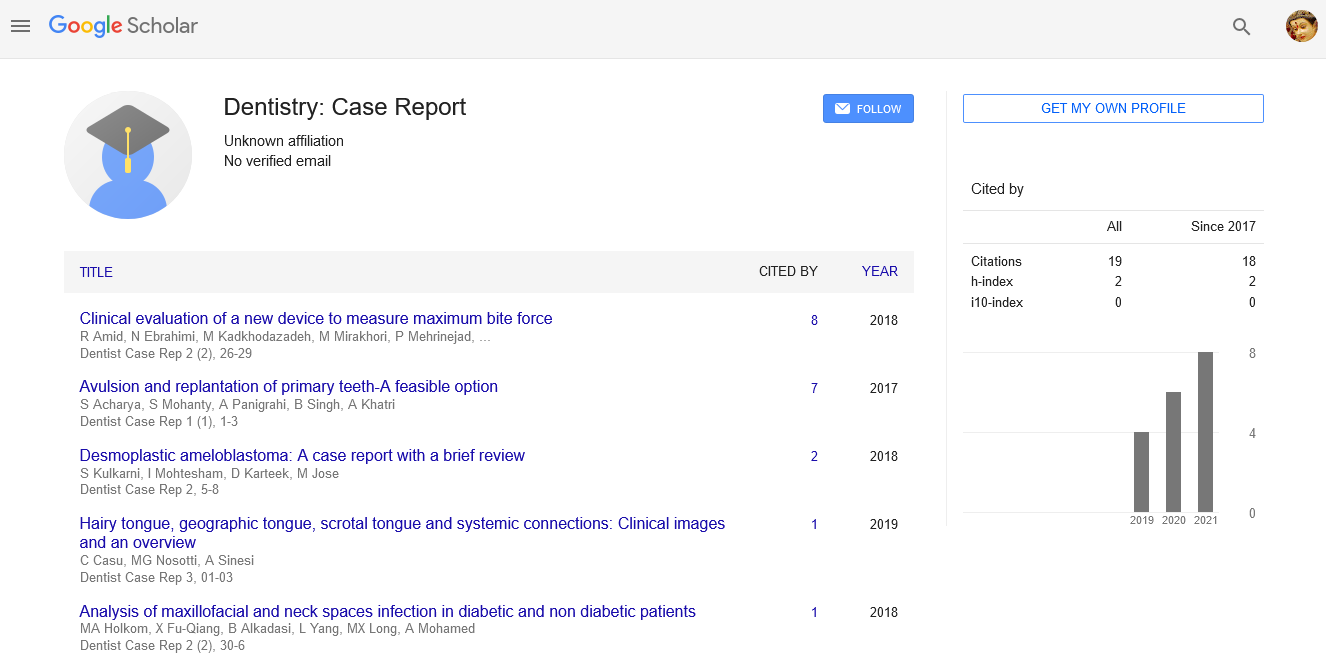Advanced dental education
Received: 04-Mar-2022, Manuscript No. puldcr-22-4697; Editor assigned: 07-Mar-2022, Pre QC No. puldcr-22-4697; Reviewed: 22-Mar-2022 QC No. puldcr-22-4697; Revised: 25-Mar-2022, Manuscript No. puldcr-22-4697; Published: 28-Mar-2022, DOI: 10.37532. puldcr.22.6.2.1
This open-access article is distributed under the terms of the Creative Commons Attribution Non-Commercial License (CC BY-NC) (http://creativecommons.org/licenses/by-nc/4.0/), which permits reuse, distribution and reproduction of the article, provided that the original work is properly cited and the reuse is restricted to noncommercial purposes. For commercial reuse, contact reprints@pulsus.com
Abstract
In a broader sense, digital dentistry refers to any dental technology or gadget that includes digital or computer-controlled components rather than mechanical or electrical components alone. This broad description can encompass everything from the most well-known aspect of digital dentistry, CAD/CAM (Computer-Aided Design/Computer-Aided Manufacture), to those who aren't even aware of it, such as computer-controlled supply of laughing gas. During the last thirty years, different activities in the harmonization of European education have lead dental education also to face continuous changes. The dental directive defining an independent dental degree-supported five-year curriculum was issued in 1978. This Directive includes the academic requirements concerning the popularity of Diplomas, Certificates, and other qualifications of dentists.
Introduction
In contrast to mechanical or electrical components, digital dentistry can be described as any dental technology or gadget that has digital or computer-controlled components. This broad term can encompass everything from the most well-known area of digital dentistry, CAD/ CAM (Computer-Aided Design/Computer-Aided Manufacture), to individuals who may not even be aware of their existence, such as computer-controlled delivery of laughing gas. Laser dentistry has the advantage of being a far less intrusive option for various procedures. Lasers emit light energy, which results in a faster and almost painless healing process. This procedure is commonly used to treat benign tumours, cold sores, and crown lengthening.
Nanotechnology has the potential to change dentistry as a whole, as well as bring major benefits to human civilization through improved health and better resource management. Nanomaterials and nanoparticles are predicted to play a key role in future Nano dental applications. Nano dentistry is expected to improve human quality of life in the twenty-first century.
In the United States and Canada, oral sedation dentistry is presently the most often used method for calming patients' concerns. The method is easy and does not involve the use of needles. It's as though they were dozing off during the procedure. Oral sedation dentistry, on the other hand, keeps the patient awake and alert for safety and compliance. The pain signals from the afflicted teeth and the gum tissue will be temporarily blocked by this local anaesthetic.
Bonding is a technique that involves repairing a tooth with a tooth-coloured composite resin (plastic). Bonding will be used to repair decaying, chipped, fractured, or discoloured teeth. Veneers are tooth-coloured shells that are bonded to the front surfaces of the teeth. If the majority of the tooth is still there, veneers can be used to improve the appearance of the tooth without the need for a crown. They're the same thing as fake fingernails. A dental inlay, also known as an onlay, is a type of filling that is larger than a filling but smaller than a crown. It's either glued or cemented in place. The goal is to change a tooth's length, shape, or surface characteristics. This will be a rather painless and short operation. It's also known as odontoplasty or tooth reshaping. Tooth whitening helps to whiten teeth and remove stains and discoloration.
Dental anesthesiology (or dental anesthesiology) is a dental speciality that focuses on pain control through advanced local and general anaesthetic procedures. A dentist anesthesiologist is a dentist who has completed a three-year or longer accredited postdoctoral anesthesiology residency programme for dentists, as defined by the Commission on Dental Accreditation's Standards for Dental Anesthesiology Residency Programs, and/or meets the requirements for examination by the American Dental Board of Anesthesiology.
Dental hygiene, often known as oral hygiene, is the practice of maintaining adequate dental hygiene in order to avoid dental issues. Your dentist and dental hygienist should see you at least twice a year, but the dental care you offer at home is an important component of maintaining good oral health. The best method to avoid dental emergencies is to follow a good at-home routine that is supported by regular dentist check-ups and cleanings.





